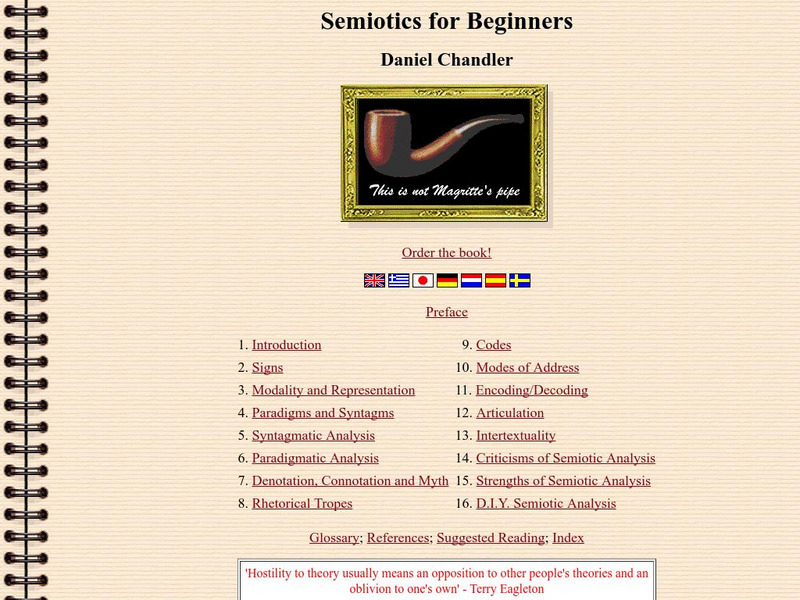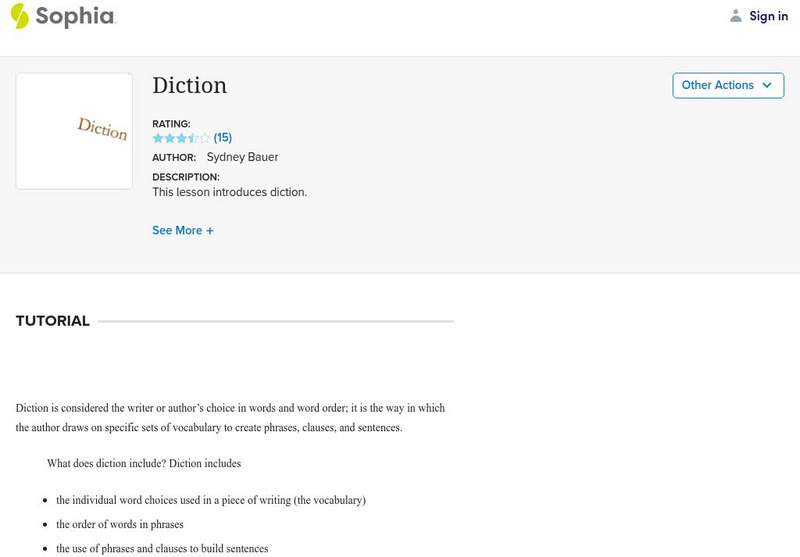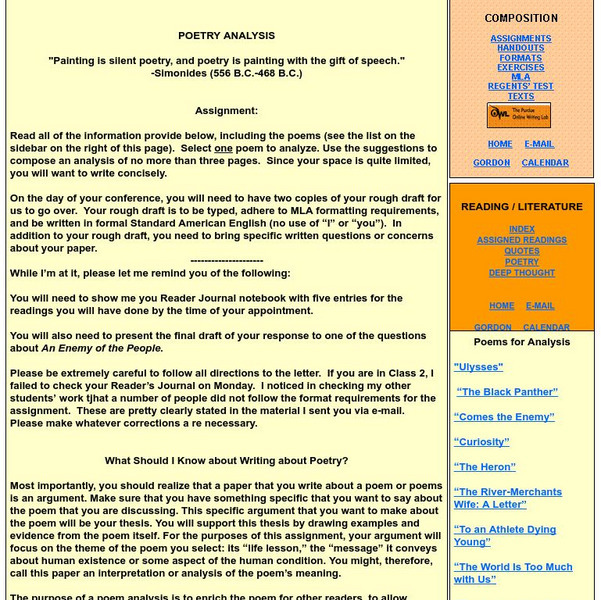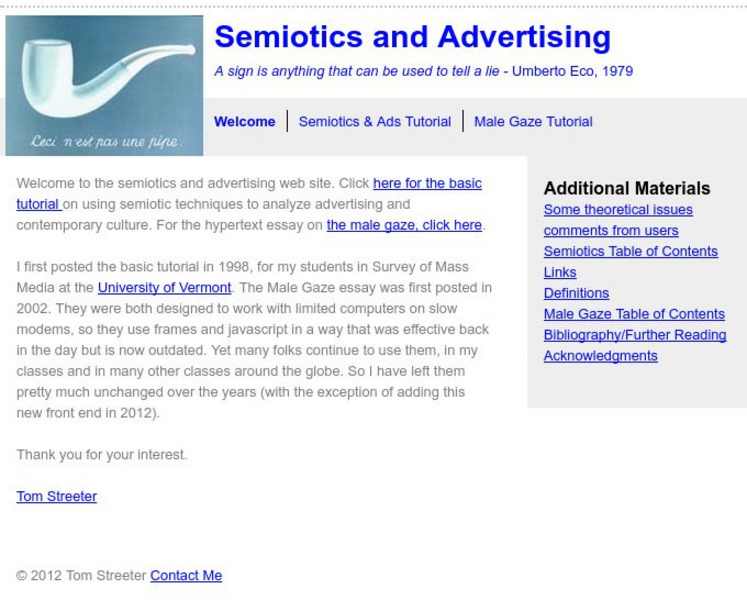Hi, what do you want to do?
Curated OER
Flying Freudian Fun: A Look At Ethical Decision Making
There are not many more apt examples of ethics gone awry than William Golding's Lord of the Flies.. Ninth graders focus the ethics of decision making with the examples provided in the plot. They focus on the...
National Endowment for the Humanities
Tales of the Supernatural
Scary stuff! Whether approached as the first horror story or a "serious imaginative exploration of the human condition," Frankenstein continues to engage readers. Here's a packet of activities that uses Mary Shelley's gothic...
Curated OER
The Red Badge of Courage: A New Kind of Realism
Is it possible to tell a true war story? Tim O’Brien says that fiction is for “getting at the truth when the truth isn’t sufficient for the truth.” To get at the truth about war, class members examine primary source materials from the...
Curated OER
Painting Places with Words Using John Steinbeck's Of Mice and Men
Useful in an Of Mice and Men unit, or in a unit that focuses on descriptive writing, this lesson prompts young authors to impersonate John Steinbeck's writing style in the opening passages of the novel. A Six Trait writing activity...
National Park Service
Petrified Forest National Park
Poetry Soup, a reading and writing unit constructed by the Petrified Forest National Park, will have scholars hungry to learn about nature. The cross-content unit contains topics related to history, science, and language arts. Content...
Maryland Department of Education
The Concept of Diversity in World Literature Lesson 6: Culture Clash
To prepare for a Quickwrite on the question, "How do different points of view create cultural conflicts?" class groups draw examples of religious, cultural, and political conflicts from Things Fall Apart and The Poisonwood Bible to use...
Novelinks
Count of Monte Cristo: Concept/Vocabulary Analysis
Explore the complex themes of Alexandre Dumas' The Count of Monte Cristo with a concept and vocabulary analysis lesson plan. Lead your class in a discussion about the underlying social and historical issues surrounding the novel, as...
Curated OER
Shizuko’s Daughter: Knowledge Rating Scale
How well do your kids know key terms from Shizuko's Daughter by Kyoko Mori? Have them review a list of words that they will encounter in the novel, and mark which words they know well, which words they've seen before, and which...
Curated OER
Shizuko’s Daughter: List-Group-Label Strategy
Help your learners navigate the vocabulary of Shizuko's Daughter by Kyoko Mori with a lesson on categorizing words. After coming up with a list of things that grow from the earth, learners decide which categories each words belong in.
Curated OER
Shizuko’s Daughter: Before, During, After Lesson Plan
Shizuko's Daughter by Kyoko Mori presents a vivid picture of Japanese culture and history. As kids read through the third chapter, they find novel-specific vocabulary to enhance their understanding and use context clues to...
Poets.org
Ghosts and Spirits
Connect poetry to a naturally kid-friendly topic: ghosts! Draw on your class's prior knowledge of the paranormal to help them access the classic poem "Haunted House" by Henry Wadsworth Longfellow. After a fun warm-up activity describing...
National Endowment for the Humanities
Thirteen Ways of Reading a Modernist Poem
High schoolers analyze modernist poetry and the role of speaker in example poems. Learners study modernist poems from the Romanticism and Victorian periods as well as Wallace Stevens' "Thirteen Ways of Looking at a Blackbird." Using a...
National Endowment for the Humanities
Charles Baudelaire: Poète Maudit (The Cursed Poet)
After learning the main ideas of the Decadent movement, students work in small groups to read and translate poems by the French poet Charles Baudelaire using basic etymology skills. They then read the accurate English translations to see...
Curated OER
Create a Video Poem
Collaborate to create a visual version of a poem using video. Before class, choose a poem to pick apart. Read it aloud and then analyze it in detail as a class. Assign a line or short section to each student to expand upon using a...
Curated OER
"Tear him for his bad verses:" Cinna the poet and Shakespeare's Sonnets
Poor Cinna, the poet. His dream of “things unlucky” certainly comes true as the mob tears him apart, at first because they mistake him for Cinna, the conspirator, and then continue to “tear him to pieces for his bad verses.” As part of...
Georgia Department of Education
Ga Virtual Learning: Poetic Devices [Pdf]
This is a nine-page PDF on poetic devices; it includes four sections: The Sounds of Words, The Meanings of Words, Arranging the Words, and The Images of Words. Each section includes the poetic devices that fit the topic complete with...
University of Toronto (Canada)
University of Toronto Libraries: Glossary of Literary Theory
A glossary of definitions for terms related to literary theory. Click each word in the glossary list and a definition with examples appears.
Other
The University of Wales: Semiotics for Beginners
Click on Denotation, Connotation, and Myth. A discourse in the use of "denotation" and "connotation" as they refer to semiotics and cultural myths.
Georgia Department of Education
Ga Virtual Learning: Realism:"an Occurrence at Owl Creek Bridge" Ambrose Bierce
This lesson focuses on the short story "An Occurrence at Owl Creek Bridge" by Ambrose Bierce. It discusses the use of literary techniques such as stream of consciousness, forshadowing, flashback and flash-forward, and offers a PDF of...
Sophia Learning
Sophia: Diction
This lesson uses text and an accompanying audio to discuss diction including its definition, what it includes, and an explanation and an example of how word choice, word order, and phrasing can change the tone of writing.
Sophia Learning
Sophia: Using Sentence Structure (Part of Speech)
This slideshow lesson focuses on using sentence structure and parts of speech to determine the meaning of unfamiliar words. It explains how to look for parentheses or commas after unfamiliar words to help determine meaning; it also shows...
Other
Gordon State College: Poetry Analysis
This is a detailed course assignment where students are asked to choose a poem from those provided and prepare an analysis of it prior to presenting it to the instructor. Students are given guidelines for an essay up to 3 pages long, and...
Other
Streeter: Semiotics and Advertising
A slide show that offers a good study of connotation and how it refers to semiotics. Symbols are not the things they represent. L.11-12.5b Nuance
Texas Education Agency
Texas Gateway:diction and Tone (English I Reading)
In this learning module, the user will learn and apply the concepts of tone and diction. Tone is the author's attitude toward the writing. Tone is largely determined by diction or the words that an author chooses.




















![Ga Virtual Learning: Poetic Devices [Pdf] Handout Ga Virtual Learning: Poetic Devices [Pdf] Handout](https://static.lp.lexp.cloud/images/attachment_defaults/resource/large/FPO-knovation.png)






